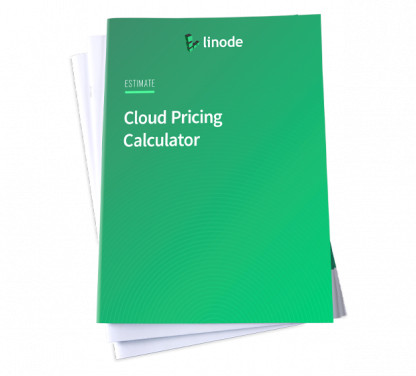Guides - Connect to a MySQL Database
Fully managed cloud database clusters built on top of Linode’s trusted and reliable platform.
To connect to a MySQL Managed Database, you need to know a few important details, such as the username, password, and host (or IP). You’ll also need a MySQL client. This guide details how to access your database using popular tools.
View Connection Details
Log in to the Cloud Manager and select Databases from the left navigation menu.
Select your Managed Database from the list. This opens the detail page for that database cluster.
The Connection Details section contains information and credentials needed for you to connect to your database.
- Username: The default user for all Managed Databases is
linroot, which has superuser admin privileges. This replaces therootuser, which is not accessible. - Password: The randomly generated password for your database cluster. See Reset Root Password if you wish to change it.
- Host: The fully qualified domain name you can use to reach your database cluster through the public network.
- Private network host: The fully qualified domain name you can use to reach your database cluster through the data center’s private network (not a VLAN). Communicating with a Database Cluster over the private network avoids network transfer fees, so it’s recommended to use this host string when possible.
- Port: The default port for your database is
3306. - SSL: This field is set to
ENABLED, which means that it is required to use an encrypted TLS/SSL connection.
Under the Connection Details section, there is a Download CA Certificate link, which allows you to download the CA (Certificate Authority) certificate. This certificate file can be used if you wish to verify the CA certificate when connecting to the database.
Connect Using MySQL (CLI)
To connect direct to the database from a command-line, you can use the mysql tool. This tool is typically not available by default on most operating systems, but is included along with many MySQL clients (and servers)
Make sure the IP address assigned to your system is included within your database’s access controls. If not, add it now. See Manage Access Controls.
Verify that the
mysqltool is installed on your system by running the following command:mysql --versionIf it is not installed, follow the steps for your operating system under Install a MySQL Client.
Use the
mysqlcommand below to connect to your database, replacing[host]and[username]with the corresponding values in the Connection Details section.mysql --host=[host] --user=[username] --password --ssl-mode=requiredNote
If you are connecting to the private network host, ensure your Compute Instance is located within that same data center and you have added a Private IPv4 address to that instance. See Managing IP Addresses.Enter your password at the prompt.
Once you are connected successfully, the MySQL prompt appears and you can enter SQL queries. See An Overview of MySQL for examples.
See How to Connect to a MySQL or MariaDB Database for more information or reference Connecting to the MySQL Server Using Command Options within MySQL’s own documentation.
Install a MySQL Client
If you do not currently have a MySQL command-line client installed on your system, follow the instructions below to install it one.
Ubuntu and Debian:
sudo apt install mysql-clientCentOS Stream 9 (and 8), CentOS/RHEL 8 (including AlmaLinux 8 and RockyLinux 8):
sudo dnf install mysqlCentOS/RHEL 7:
sudo yum install mysqlFedora:
sudo dnf install community-mysql
Connect Using MySQL Workbench (GUI)
The MySQL Workbench provides a graphical interface for connecting to MySQL databases. Using this tool, you can visualize your database, its structure, and the data it contains.
Install the MySQL Workbench software from the MySQL Community Downloads page. Be sure to select the operating system you’re using locally.
Open the software and select Database > Manage Connections from the menu. This displays the Manage Server Connections window.
Enter a Connection Name for this new connection.
Under the Parameters tab, enter the details for your connection, including the Hostname, Username, and Port. You can optionally store your password by clicking the Store in Keychain… button and entering your password. If you do not store your password, you must enter it manually each time you connect. For security reasons, it’s typically recommended not to store your password.

Under the SSL tab, set Use SSL to Require. You may also use Required and Verify CA if you wish to verify the CA (Certificate Authority) certificate each time you connect. If you choose this option, download the CA certificate from the Cloud Manager and set the SSL CA File field to point to that downloaded file.

Click Test Connection to verify you can successfully connect to the database and then click Close to store the connection settings and return to the main screen.
To connect to the database, select Database > Connect to Database from the main menu. In the following screen, select the stored connection you just created and click OK.
For instructions on using MySQL Workbench to interact with your database, see Install MySQL Workbench for Database Administration or look through the MySQL Workbench Manual.
This page was originally published on





